Teach your children about color theory with these lists of famous paintings that show color theory at work.
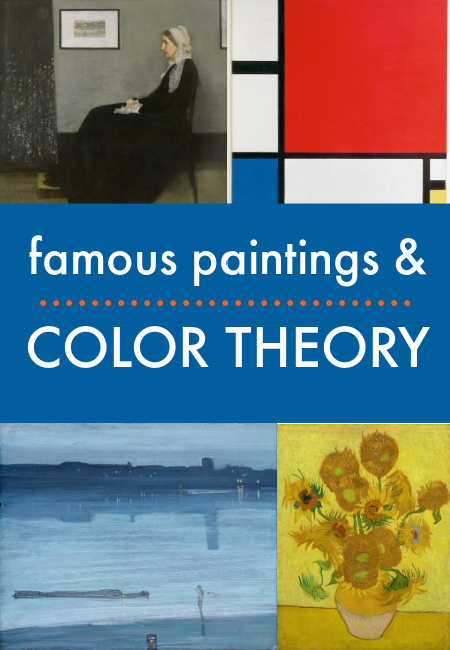
Examples of famous paintings that show color theory
This famous artists lesson is part of our children art lessons resources.
In this article you will find:
:: examples of famous paintings that show how artists use color theory, including famous art in primary colors, secondary colors, tertiarty colors, warm and cool colors, contrasting colors, monotone, tints, tones and shades
:: links to ready-made color theory art lessons that teach children about the color wheel through creative art projects
:: links to art lesson plans that use famous art as the inspiration for hands-on children’s art projects
:: a guide to art criticism for children which includes printable art discussion cards

Studying famous paintings with children
There is so much to learn by studying famous art with children. The best and easiest way to teach great art lessons is to use our ready-made lesson plans. Choose from:
Art Spark: This kit gives you everything you Art Spark: This kit gives you everything you need to get started with art and develop a rich and creative art practice with your children. 30+ inspiring process art projects, famous art, world culture, practical tips, and endless possibilities! See more and get your copy here.
Exploring Great Artists: This book gives you everything you need to teach an exciting art program inspired by the great artists of the world. With profiles of each artist, materials lists, lesson plans, and creative, hands-on art projects for every featured artist you’ll easily be able to deliver engaging and educational art lessons. See more and get your copy here.
Diversify Your Art Curriculum: This art curriculum bundle of five ebooks gives you everything you need to teach 25 art projects inspired by contemporary artists of colour from four continents. See more and get your copy here.
Color Theory Art Lessons: This curriculum gives you all the resources you need to learn about the color wheel and color theory and enjoy hands-on, easy, creative art projects for every lesson. It includes art history, famous artist profiles, and wider cross-curricular lessons in science, math, language arts and world culture, plus bonus printables and posters. See more and get your copy here.
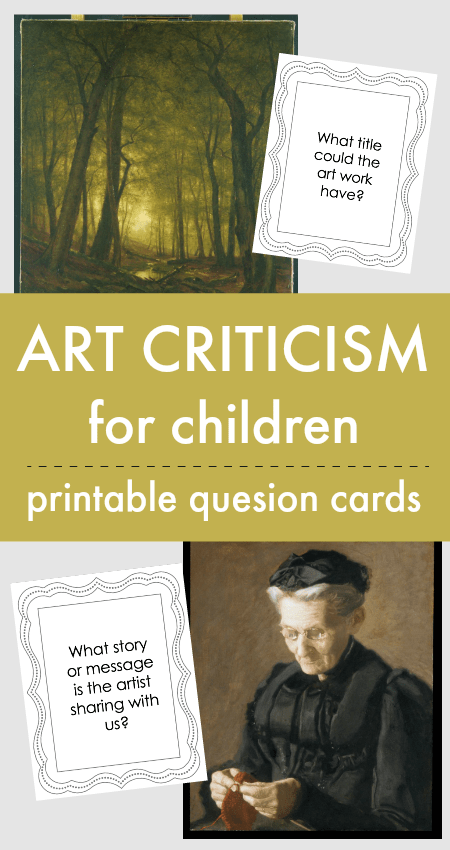
How to talk to children about famous paintings
Talking about famous paintings with children helps develop their thinking skills, language, and understanding of the world. It encourages them to look closely at art, think about why the artist has chosen to make a particular art work, and consider what the piece means.
Use our art criticism guide for children to get started, which includes a set printable art discussion cards, and see our suggestions of ten paintings to use for art criticism with children to begin with.
You can use all the famous paintings listed below to spark great discussions too. When looking at and talking about art with our children a great way to begin and to open an interesting conversation is simply to ask “What can you see?”
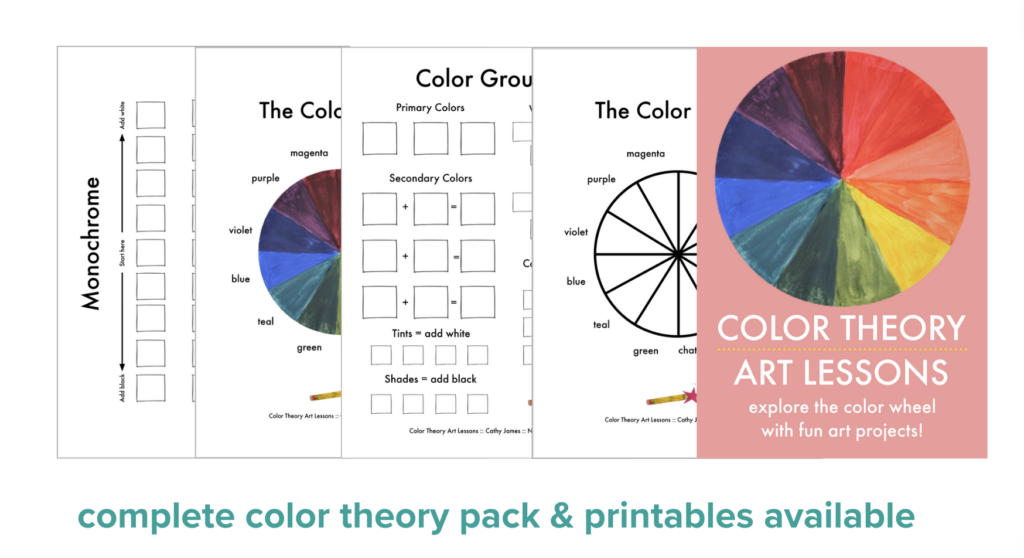
How to teach children about the color wheel and color theory
The famous paintings listed below all use aspects of the color wheel to create effects, feelings and atmosphere. Pair these famous artworks with our creative color theory art projects so your children can learn by doing as well as seeing.
Use our ready-made Color Theory Art Lessons curriculum and you’ll have hands-on, easy, creative art projects for every lesson along with art history, famous artist profiles, and wider cross-curricular lessons including the science of light and color, how the eye works, rainbows, maps, photography and film history, how colors get their names, and color recipe codes.
See more and get your copy of all the Color Theory art lessons here.
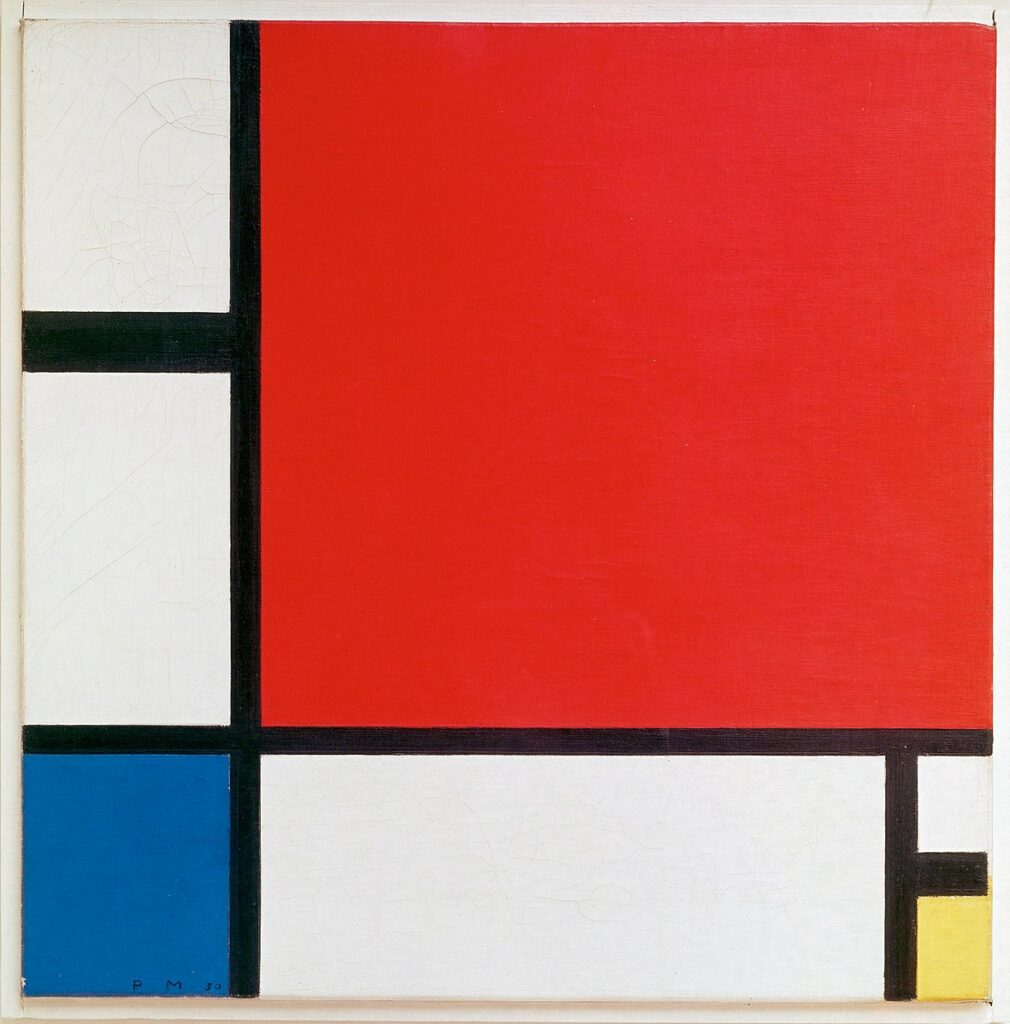
Famous paintings using primary colors
The word primary means the most important, the first or the beginning.
The three primary colors are red, yellow and blue.
Take a look at these famous paintings that use primary colors:
No. VI / Composition No.II, 1920 Piet Mondrian
Composition II in Red, Blue, and Yellow, 1930 Piet Mondrian
Composition B (No.II) with Red, 1935 Piet Mondrian
Composition with Yellow, Blue and Red, 1937–42 Piet Mondrian
Composition 10, 1939-1942 Piet Mondrian
The Milkmaid, 1658-60, Johannes Vermeer
Bedroom in Arles, 1888, Vincent Van Gogh
Three Sounds, 1926, Wassily Kandinsky
Boulogne Sands, 1888-91, Philip Wilson Steer
Need an art project for children using primary colors? You’ll find one inspired by Piet Mondrian in our Color Theory Art Lessons.

Famous paintings using secondary colors
If you mix any pair of primary colors together in equal amounts you can create secondary colors. The secondary colors are orange, purple and green.
Here are examples of famous art that use secondary colors:
Ukrainian Bull, 1977, Maria Prymachenko
Need an art project for children using secondary colors? You’ll find one inspired by Georges Seurat in our Color Theory Art Lessons.
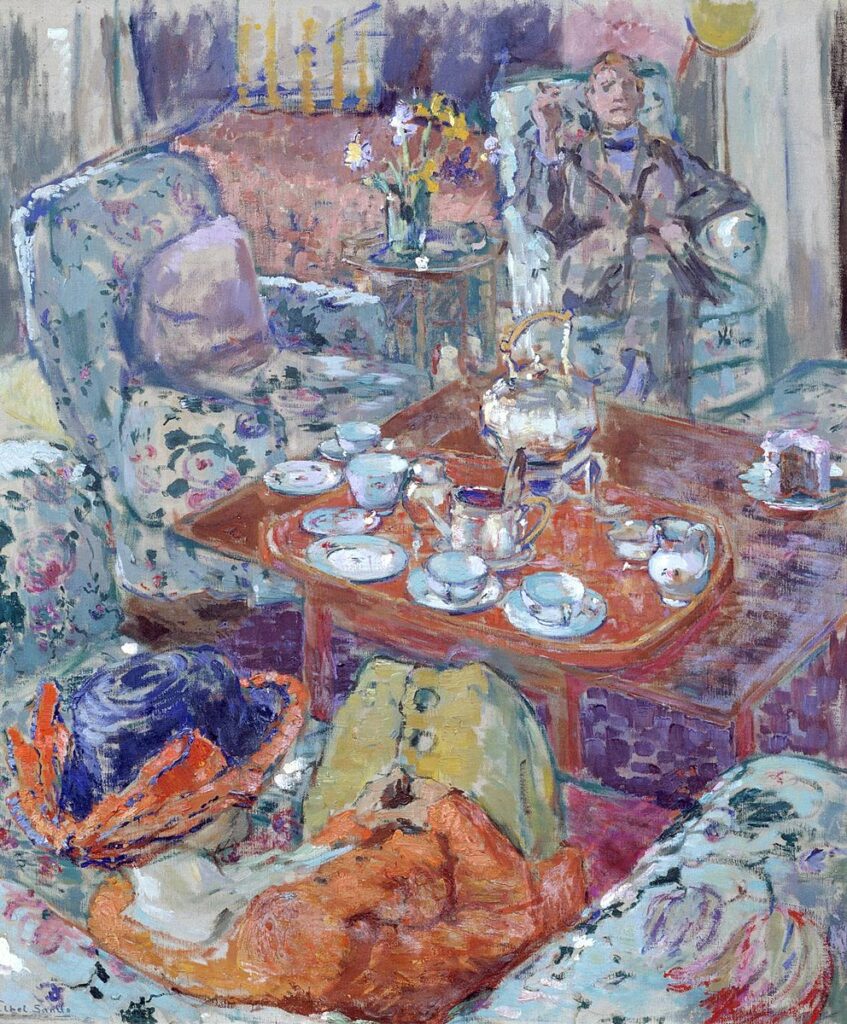
Famous paintings using tertiary colors
Tertiary colors are made by mixing equal amounts of a primary color and a secondary color to create vermillion, amber, chartreuse, teal, violet, and magenta.
Red and orange = vermillion
Red and purple = magenta
Yellow and orange = amber
Yellow and green = chartreuse
Blue and green = teal
Blue and purple = violet
Here are two paintings in tertiary colors:
Woman with Parasol, 1893, Paul Signac
Tea with Sickert, 1911-12, Ethel Sands

Famous paintings using contrasting colors
Another way to group colors from the color wheel is in pairs of contrasting colors. They are also called complementary colors.
Contrasting colors are special pairs of colors that have an outstanding effect on each other. When contrasting colors are placed next to each other they have the strongest contrast with each other. They are sometimes referred to as opposite colors, because of the striking color clash they create.
Red and green are a contrasting / complementary pair.
Yellow and purple are a contrasting / complementary pair.
Blue and orange are a contrasting / complementary pair.
Have a look at these famous paintings using contrasting colors:
La Parade detail, 1887-8, Georges Seurat
Green and Silver: Beaulieu, Touraine, 1888, James McNeill Whistler
Winter Landscape, 1909, Wassily Kandinsky
Self-Portrait, 1889, Vincent Van Gogh
Washday, 1950s, Clementine Hunter
Need an art project for children using contrasting colors? You’ll find one inspired by Wassily Kandinsky in our Color Theory Art Lessons.
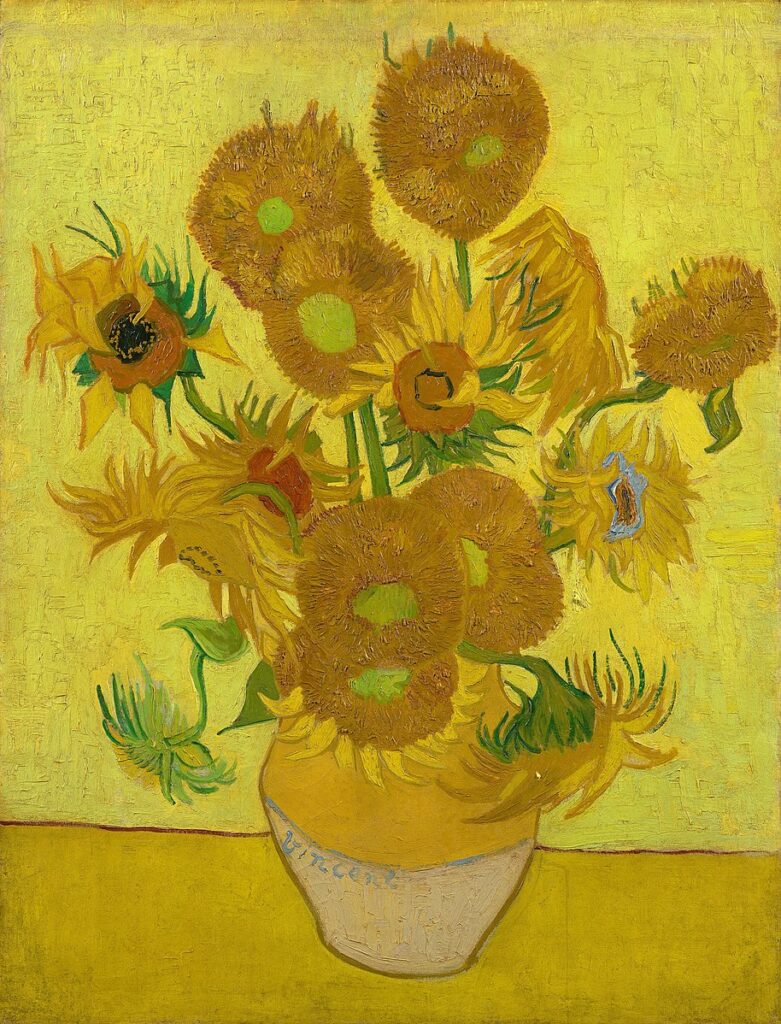
Famous paintings using warm colors
In addition to primary, secondary and tertiary colors, another way we can group colors on the color wheel is by dividing the wheel in half between the warm and cool colors.
Blues, green and blue-purples are all cool colors.
Reds, oranges, yellows and red-purples are all warm colors.
Here are some examples of famous paintings in warm colors:
Sunflowers, 1888, Vincent Van Gogh
Still Life With Mangoes, 1893, Paul Gaugin
The Night Café, 1888, Vincent Van Gogh
Cotopaxi, 1862, Frederic Church
Snoopy Sees Earth Wrapped in Sunset, 1970, Alma Thomas
Need an art project for children using warm colors? You’ll find a great one in our Color Theory Art Lessons.
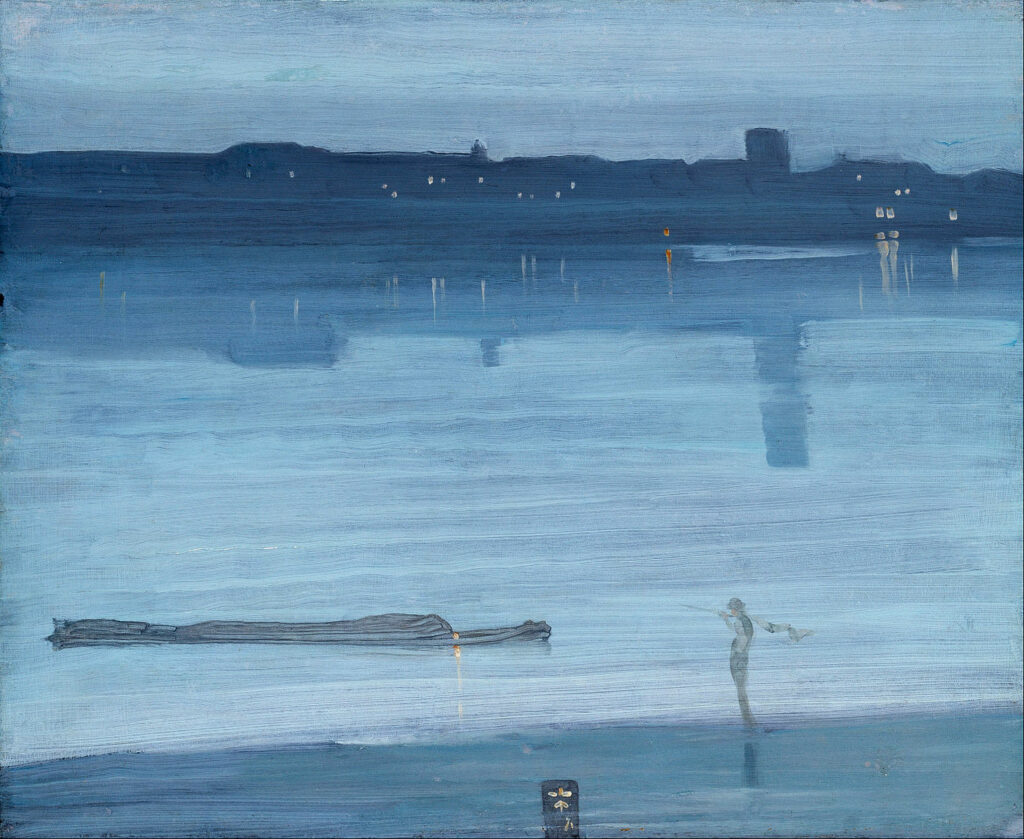
Famous paintings using cool colors
The following are all famous paintings using cool colors:
The Seine Seen From La Grande Jatte, 1888, Georges Seurat
Nocturne, The Solent, 1866, James McNeill Whistler
Nocturne: Blue and Silver – Chelsea, 1871, James McNeill Whistler
The Japanese Footbridge and the Water Lily Pool, Giverny, 1899, Claude Monet
The Great Wave, 1831, Katsushika Hokusai
Fishing Boats, Key West, 1903, Winslow Homer
Need an art project for children using cool colors? We’ve got a great one for you in our Color Theory Art Lessons.
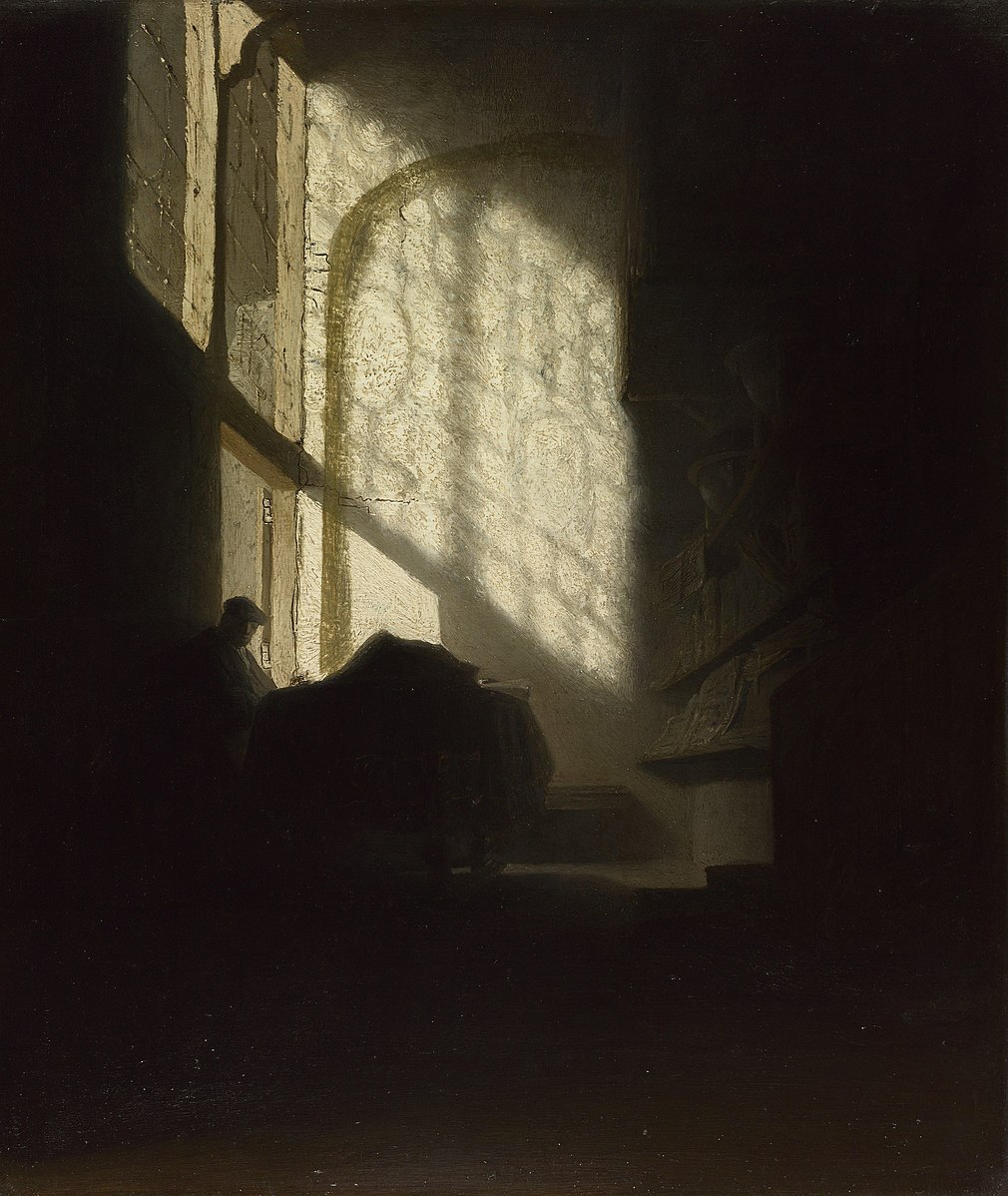
Famous paintings using monochrome colors
Mono means one and chrome means color, so monochrome art is art that is created using just one color.
These famous paintings all use monochrome colors:
A man seated reading at a Table in a Lofty Room, 1628 -30, follower of Rembrandt
Monochrome Composition: A Blot, 1804, John Varley
Durham, 1805, John Sell Cotman
The Artists’s Hand V, 1979, Henry Moore
Need a monotone art project for children? You’ll find ready-made lesson plan in our Color Theory Art Lessons.
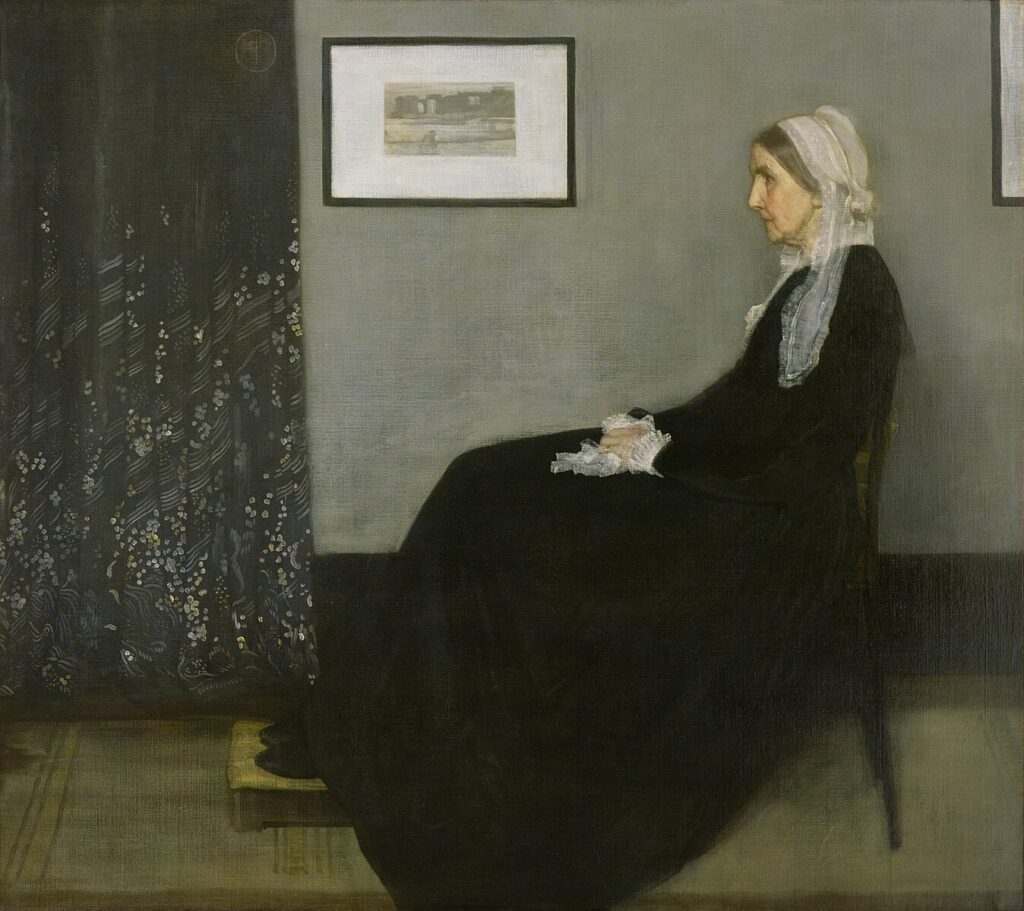
Famous paintings using tints, tones and shades of color
To make a wider selection of colors, we can take one color from the color wheel and make it lighter or darker. Rather than mixing primary or secondary colors together, an artist may choose one color and mix it with white and with black to create a range of tints and shades.
A tint is a color that has been mixed (lightened) with white.
A shade is a color that has been mixed (darkened) with black.
And a tone is a color that has been mixed (neutralised) with gray.
Take a look at these famous paintings that show color theory of tints, tones and shades.
The Thames in Ice, 1860, James McNeill Whister
Nocturne: Blue and Gold – Southampton Water, 1872, James McNeill Whister
Arrangement in Grey and Black No. 1 / Whistler’s Mother, 1871, James McNeill Whister
Nocturne, The Solent, 1866, James McNeill Whister
Linen, 1913, Natalia Goncharova
Grenoble from the River Isere, with the Porte de France, 1802, Joseph Mallord William Turner
Need an easy lesson to teach tints, tones and shades to children? You’ll find a great one in our Color Theory Art Lessons.

Ready-made art lesson plans to make your teaching easier!
As a busy art teacher you can save yourself so much time by using our ready-made art lesson plans. Choose from:
Art Spark: This kit gives you everything you Art Spark: This kit gives you everything you need to get started with art and develop a rich and creative art practice with your children. 30+ inspiring process art projects, famous art, world culture, practical tips, and endless possibilities! See more and get your copy here.
Exploring Great Artists: This book gives you everything you need to teach an exciting art program inspired by the great artists of the world. With profiles of each artist, materials lists, lesson plans, and creative, hands-on art projects for every featured artist you’ll easily be able to deliver engaging and educational art lessons. See more and get your copy here.
Diversify Your Art Curriculum: This art curriculum bundle of five ebooks gives you everything you need to teach 25 art projects inspired by contemporary artists of colour from four continents. See more and get your copy here.
Color Theory Art Lessons: This curriculum gives you all the resources you need to learn about the color wheel and color theory and enjoy hands-on, easy, creative art projects for every lesson. It includes art history, famous artist profiles, and wider cross-curricular lessons in science, math, language arts and world culture, plus bonus printables and posters. See more and get your copy here.

